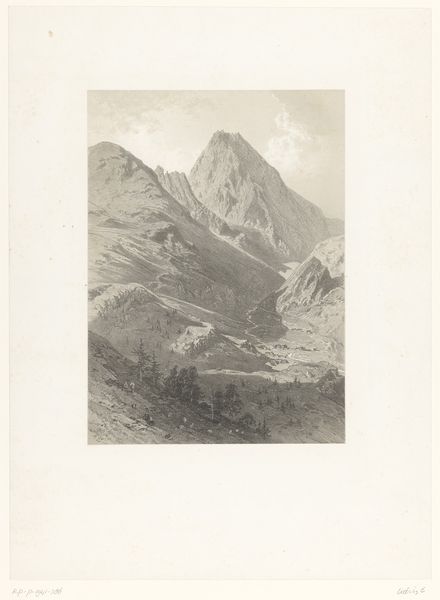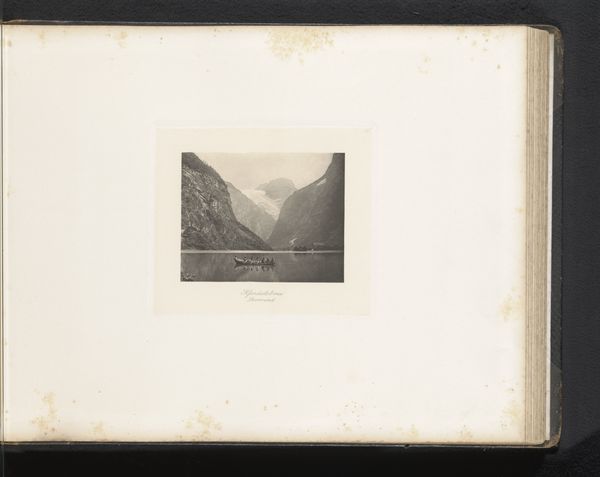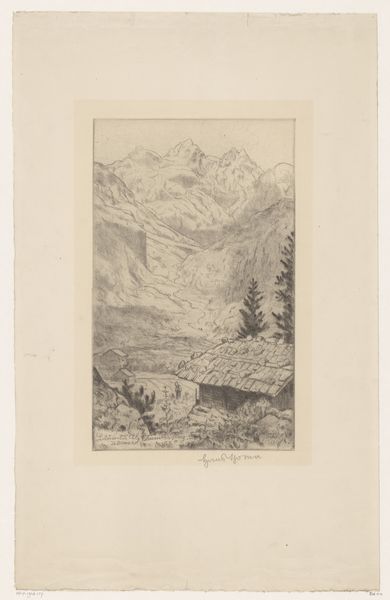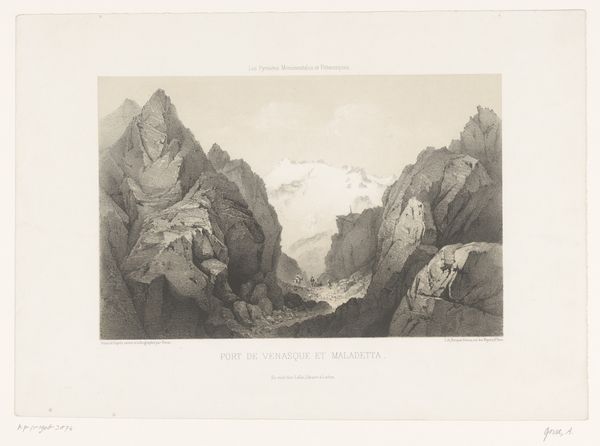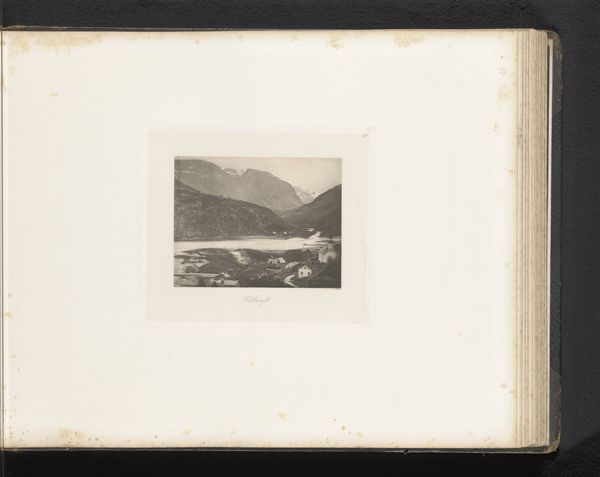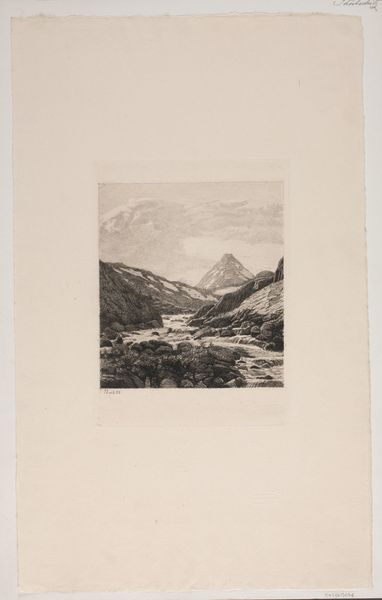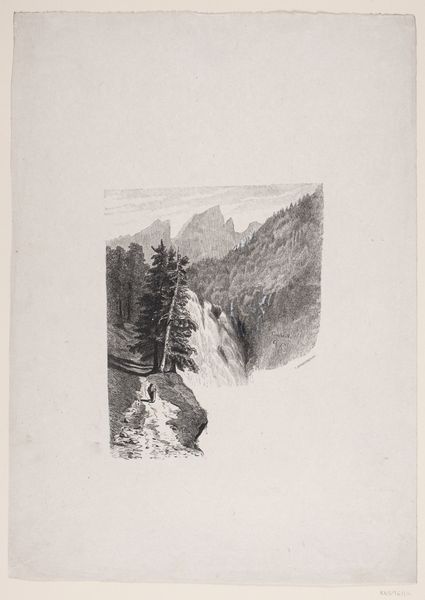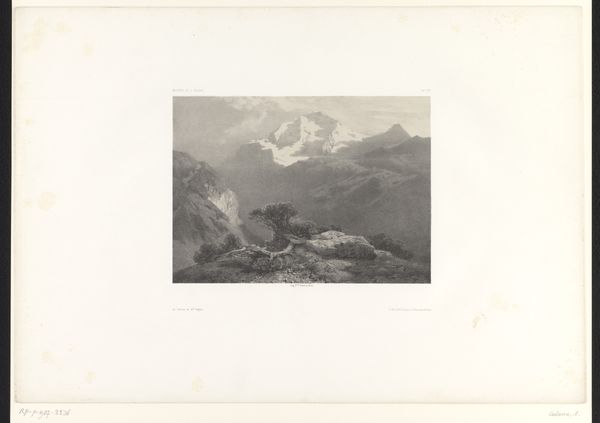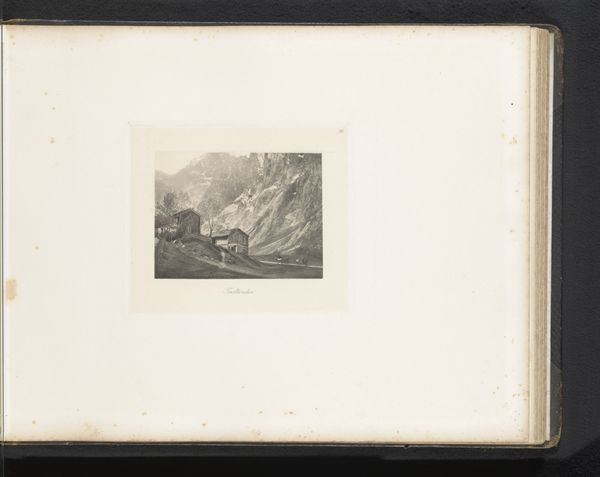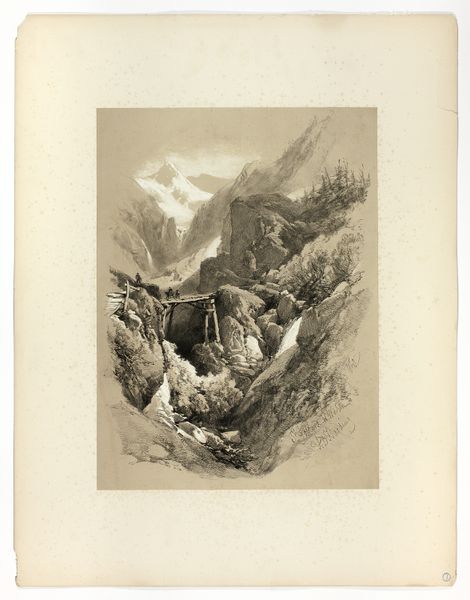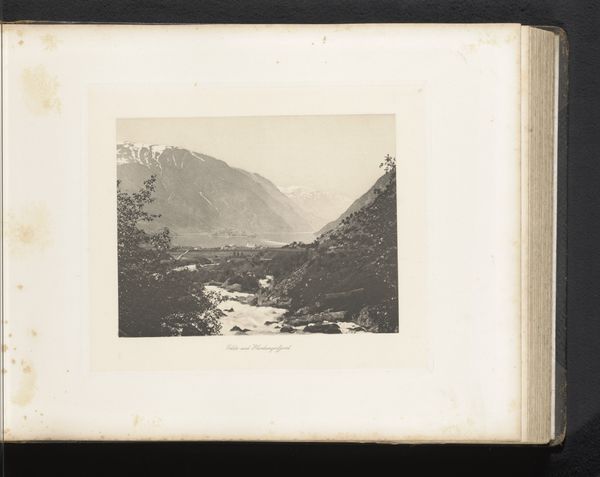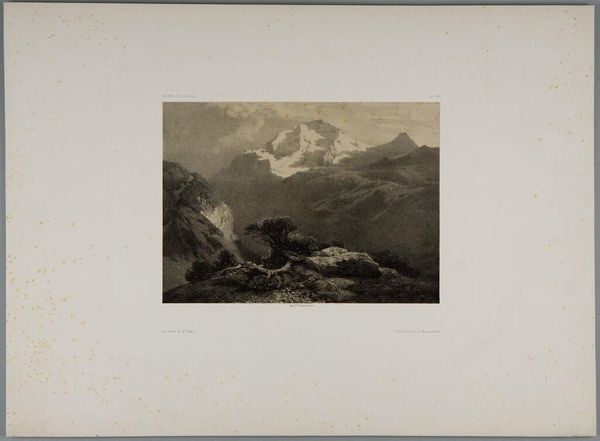
Dimensions: height 400 mm, width 283 mm
Copyright: Rijks Museum: Open Domain
Editor: Eugène Cicéri’s "Mountain Landscape with Rocky Path," made around 1854 using etching, graphite, and printmaking, has a striking quality. The mountains seem both grand and imposing. What's your interpretation? Curator: This piece invites us to consider how landscape is never a neutral zone, but one loaded with cultural meaning. During the rise of Romanticism in the mid-19th century, mountains often symbolized the sublime—nature’s power exceeding human comprehension, offering an escape from industrial society. Consider the visual composition: the path draws our eye into the depths. Does this "escape" lead somewhere liberating, or into a space that, though beautiful, isolates us from social realities? Editor: That's an interesting point, this desire for an escape from social realities! It does feel somewhat isolating, even melancholic. Do you think Cicéri was making a specific statement about industrialization? Curator: It's less about a direct statement and more about reflecting anxieties and desires present at the time. As industrialization intensified, the "untouched" landscape became a powerful symbol. The rugged, almost hostile environment of the mountain might represent resistance, but also potentially reinforces the idea that true beauty exists outside of the progress available to everyone. What societal structures make that progress unattainable? Consider who had the time and resources to pursue this romantic ideal and who was left behind. Editor: I see what you mean. It's like the romanticized landscape, while beautiful, becomes a symbol of privilege. Thanks, I’ve definitely learned to consider such pieces within a wider context. Curator: Absolutely! And I’m left thinking about how we might responsibly engage with and represent these landscapes today.
Comments
No comments
Be the first to comment and join the conversation on the ultimate creative platform.
